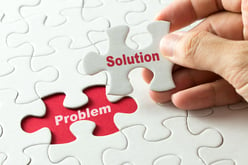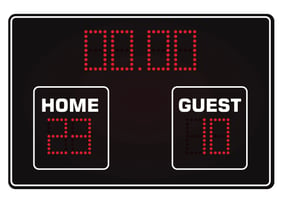8 Fun (and Quality) Movies & Shows for Marketers to Enjoy
Top 8 Movies about Sales and Marketing. Check out our picks for the best movies and tv shows about modern marketing.
Similarities between running a successful football team and converting prospects to customers. A great model for Business Development Strategies.
%20(1).jpeg?width=6936&name=BD%20Blog%20Post%20Image%20%231%20(Businessman%20with%20Football)%20(1).jpeg) After watching the recent Super Bowl, I began thinking about the similarities between running a successful football team and converting prospects to customers.
After watching the recent Super Bowl, I began thinking about the similarities between running a successful football team and converting prospects to customers.
In football, it’s necessary to have a coach who develops a game plan that capitalizes on the strengths of every player to give the team the best chance of winning. Next, it’s critical to have assistant coaches who can put the game plan into action on both sides of the ball. On offense, it’s essential to have a quarterback who’s capable of directing the running backs, wide receivers, tight ends and linemen in ways that move the ball down the field and result in touchdowns and occasional field goals while minimizing the number of punts.
It’s also necessary to have a strong defense run by a highly organized and experienced defensive coordinator, and anchored by a smart, athletic middle linebacker who knows the opponent’s tendencies and can direct his teammates – linemen, fellow linebackers, safeties and cornerbacks -- to prevent the opponent from scoring.
In the realm of converting prospects into customers, or keeping customers loyal, depending upon company size, the CEO, president or vice president of marketing/business development, should develop a game plan for which various team members are responsible.
In my two decades of experience working on and leading large sales/marketing teams, and more recently providing sales coaching and training to a dozen organizations with the support from our sister company, velocityHUB Pittsburgh, I observed the following: It’s imperative for the coach to empower team members to play these “positions” (roles) at any time during the customer journey:
 LEADership is Essential
LEADership is EssentialThe Client Advocate is the company’s business development quarterback (QB). He or she takes the lead when it comes to attracting and retaining customers. In fact, the acronym LEAD is a powerful way to define the Client Advocate’s responsibilities:
L – Listen to understand your prospect’s requirements better than they do and continue adding that value to keep their business and cultivate loyalty, which is a much more powerful sentiment than mere satisfaction.
E – Educate by teaching and coaching the team to deliver what you promised and to go “above and beyond” when appropriate.
A – Advocate for your customer by supporting, urging, pushing and driving your organization’s resources to deliver the best products, services and value to your customer. If you don’t advocate for the customer, who will?
D – Determination means to never stop advocating for your customer even when your company is facing challenges that can make it difficult to “stand up” for what you believe is right.
By listening, educating, advocating and persisting, you, as the Client Advocate/QB can foster the necessary customer loyalty to minimize costly turnover. As in football, turnovers can mean the difference between winning and losing a game, and between having a successful or unsuccessful season.
 Strategy is Crucial
Strategy is Crucial
Just as a successful football team has a game plan and strategies for offense, defense and special teams, a solid business should have a four-pronged, 360-degree strategy that helps the company win consistently. To help ensure that level of success, every company needs The Strategist.
That person has a firm understanding of the company, and of the markets the company serves. The Strategist also understands what competitors’ strategies are, and what tactics they’re using to implement them. The Strategist can gather that type of information from websites, trade and business articles, social media and blog posts, webinars, tradeshows and conferences, and conversations with contacts.
The Strategist also knows how to leverage the company’s size and capabilities to attract and retain customers. That person should also be able to cultivate strong relationships with customers so the company can convert the knowledge and intel gleaned formally and informally into actions that enable the business to grow.
Additionally, an effective Strategist makes certain that the company’s pricing strategy is conducive to winning repeat and new business consistently.
 The Playmaker-Evangelist
The Playmaker-Evangelist
Just as an All-Pro QB must share a tremendous amount of data and information with teammates and “sell” them on execution of the coach’s game plan, the Playmaker-Evangelist must passionately advocate a position and translate that stance on a business development matter into knowledge and wisdom that colleagues can apply to the company’s situation.
Above all else, the Playmaker-Evangelist should foster a sense of team by being a practical optimist. He or she should also spread that positive attitude throughout the organization to help everyone get on the same page (or screen more commonly these days) of the playbook.
By establishing internal support and generating the necessary energy for achieving the business development goals the Playmaker-Evangelist has created or championed, that person will be exhibiting the leadership characteristics essential to any successful undertaking which involves getting a group of people to help each other accomplish specific, measurable, achievable, realistic and timely (SMART) goals.
An effective Player-Evangelist can also help teammates shape the prospect’s (or customer’s) thinking about how the products or services (“scope of work”) you’ve provided or are proposing meets the prospect’s objectives. That attribute makes the Player-Evangelist a valuable external force who can work with prospects and customers to calibrate their needs with your organization’s capabilities.
Put another way, that person can compete in game situations and is not limited to practice squad duty.
 The Solutionist
The Solutionist
As the person who develops or leads the development of a product solution for the customer, The Solutionist should be involved in all aspects of the account. The Solutionist doesn’t need to be the leader of each “solution area,” but he or she should always know what’s going on, much like the relationship between offensive and defensive coordinators and the position coaches working under their direction to help players master their craft by refining their techniques and preparing for potential situations likely to arise during games.
The foundation for being an effective Solutionist is continual optimism that gives encouragement to colleagues even if the going gets tough. The Solutionist can be effective in that role by helping team members draw upon previous technical and business innovations that they created by using them as-is or modifying them to fit new requirements.
In many instances, team members need a colleague to help them see the “big picture” or remind them of things they may have done or created which continue to have value. Such a trait doesn’t require institutional memory, although remembering things that happened previously helps. If The Solutionist asks the right questions, however, he or she can draw the necessary information from colleagues and foster a can-do attitude that helps move the ball into the end zone.
After The Solutionist has developed winning themes or has helped to shape them in the form of high-demand products or services, that person can set the tone for a long-term customer relationship that’s mutually beneficial.
 Support Partner
Support Partner
The Support Partner should be visible to everyone on the team. That person should also be regarded as one of the hardest workers on the team who’s also effective at motivating other team members to best serve customers while reaching his or her full potential as a contributing member of the organization. If the Support Partner doesn’t motivate colleagues, or motivate a colleague who’s a excels at motivating others, who will?
An effective Support Partner must be resourceful and remove obstacles. In doing so, teammates appreciate that person tremendously.
Additionally, the Support Partner should be engaged, visible and always working hard. A common trait of successful leaders in all walks of life is that they don’t separate themselves from “the masses” after achieving a high level of success. You can be that person if you commit yourself to continually appreciating your colleagues’ contributions to the organization, and to realizing that an individual’s success is the result of many people’s efforts – nobody “get to the top” alone.
In my experience, an organizational culture that’s respectful of others while being fiercely dedicated to winning ethically can result in a company that’s a market force for years or decades – a dynasty of sorts.
 The Leverager
The Leverager
A Leverager should learn to navigate the complex web of groups, structures and organizations that make up his or her organization, as well as the relevant ones in customers’ companies.
If you’re a Leverager, part of your company’s advantage is your depth and breadth of capabilities or experience in particular areas, but they’re only strengths if you use (leverage) your organization’s People, Products, Services and Innovations to competitive advantage.
An effective Leverager knows what to do at a particular time, and why that strategy or tactic would be most beneficial in a particular situation, much like a QB knows when to pass the ball, hand it off to a running back or keep it himself based on the defensive alignment, down and distance, score and time remaining.
It’s a combination of art and science. Some of it can be taught, but most of it is based on experience and the “soft skills” required to “read” colleagues and customers correctly.
%20copy-1.jpg?width=250&name=Image%20%238%20%20(Ball%20Person%20Photo)%20copy-1.jpg) Ball Person
Ball Person
The job of the Ball Person (formerly Ball Boy) is to do anything that’s necessary and ethical to obtain new business and retain established customers. It’s also imperative that the Ball Person be proactive by doing things that nobody asks of him or her, but that the individual believes should be done if the customer is to remain or become loyal to the company.
Sometimes that means the Ball Person must ask colleagues to perform specific tasks while at other times it requires him or her to take direction from colleagues who are most familiar with an aspect of the customer’s business, or who have a better sense of what activates a customer’s “hot buttons” because of time spent with the customer.
 Final Play
Final Play
In closing, I can tell you from the experiences of launching my own businesses a few times that this model works for startups and large companies alike. In a startup or small company, you might have to play all the positions yourself. The keys to success are being persistent and surrounding yourself with a strong external support team, including mentors.
As in any situation involving the need for a single person or a group of people to meet goals by working together in a highly coordinated manner, when it comes to business development, the right combination of leadership, flexibility, willingness to take direction and appreciation for everyone’s contributions to the team effort can help everyone enjoy playing the game and the celebrating rewards of victory.
To what extent do your company’s business development efforts resemble the precision of a Super Bowl Champion football team?
Top 8 Movies about Sales and Marketing. Check out our picks for the best movies and tv shows about modern marketing.
During times of downturn or crisis, being particular about what you say and how you say it is important. People are listening
Curious about the definitions and metrics that define a marketing funnel? Check out our standardized definitions on how to make your marketing count.
Be the first to know about new B2B SaaS Marketing insights to build or refine your marketing function with the tools and knowledge of today’s industry.